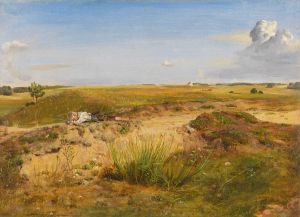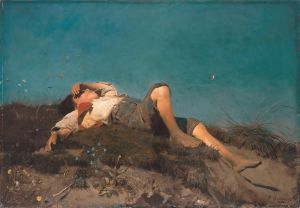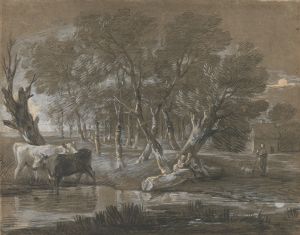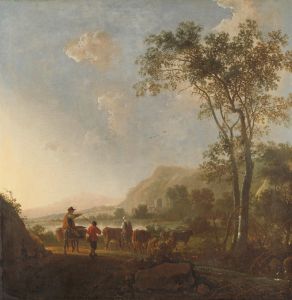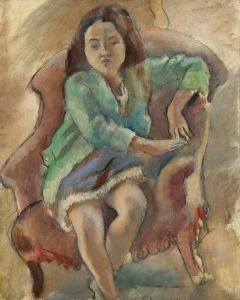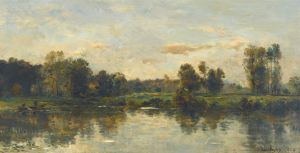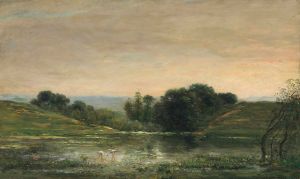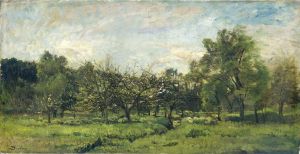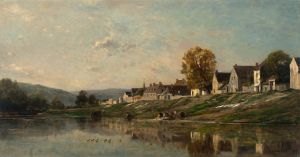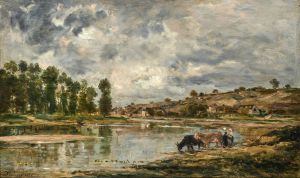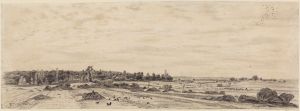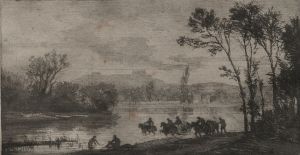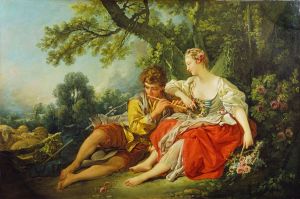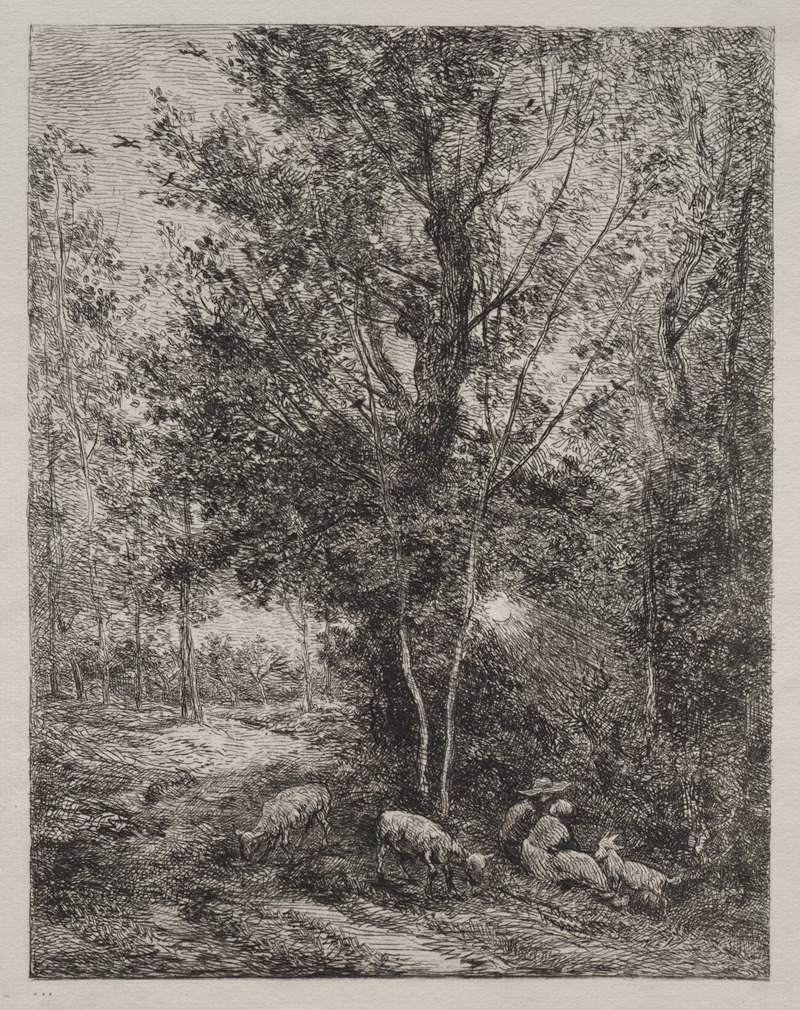
The Shepherd and the Shepherdess
A hand-painted replica of Charles François Daubigny’s masterpiece The Shepherd and the Shepherdess, meticulously crafted by professional artists to capture the true essence of the original. Each piece is created with museum-quality canvas and rare mineral pigments, carefully painted by experienced artists with delicate brushstrokes and rich, layered colors to perfectly recreate the texture of the original artwork. Unlike machine-printed reproductions, this hand-painted version brings the painting to life, infused with the artist’s emotions and skill in every stroke. Whether for personal collection or home decoration, it instantly elevates the artistic atmosphere of any space.
Charles François Daubigny, a prominent French landscape painter of the 19th century, is widely recognized as one of the key figures of the Barbizon School, a movement that emphasized naturalistic depictions of rural landscapes. Among his many works, The Shepherd and the Shepherdess is a notable example of his artistic approach, though specific details about this particular painting remain limited.
Daubigny was known for his innovative techniques and his ability to capture the serene beauty of the countryside. His works often depicted pastoral scenes, rivers, and forests, reflecting his deep connection to nature. He frequently painted en plein air (outdoors), which allowed him to observe and render the effects of light and atmosphere with great accuracy. This approach influenced later Impressionist painters, including Claude Monet and Camille Pissarro.
The Shepherd and the Shepherdess aligns with Daubigny’s broader thematic focus on rural life and the harmonious relationship between humans and nature. The painting likely portrays a tranquil scene of a shepherd and a shepherdess tending to their flock, set against a backdrop of the French countryside. Daubigny’s use of soft, natural tones and his attention to detail in depicting the landscape would have contributed to the work’s evocative and peaceful atmosphere.
While the exact date of creation for The Shepherd and the Shepherdess is not readily available, it is consistent with Daubigny’s artistic output during the mid-19th century, a period when he produced many of his most celebrated works. His paintings from this era often reflect the influence of Dutch landscape painters, particularly the 17th-century masters, whose works he admired.
Daubigny’s contributions to art extended beyond his own paintings. He played a significant role in bridging the Barbizon School and the Impressionist movement, inspiring a new generation of artists to explore the interplay of light, color, and nature. His works, including The Shepherd and the Shepherdess, continue to be appreciated for their lyrical quality and their ability to transport viewers to the idyllic landscapes of rural France.
Due to the limited availability of specific historical records or detailed analysis of The Shepherd and the Shepherdess, further information about the painting’s provenance, dimensions, or current location is not provided here. However, the work remains an important part of Daubigny’s legacy as a master of landscape painting.





